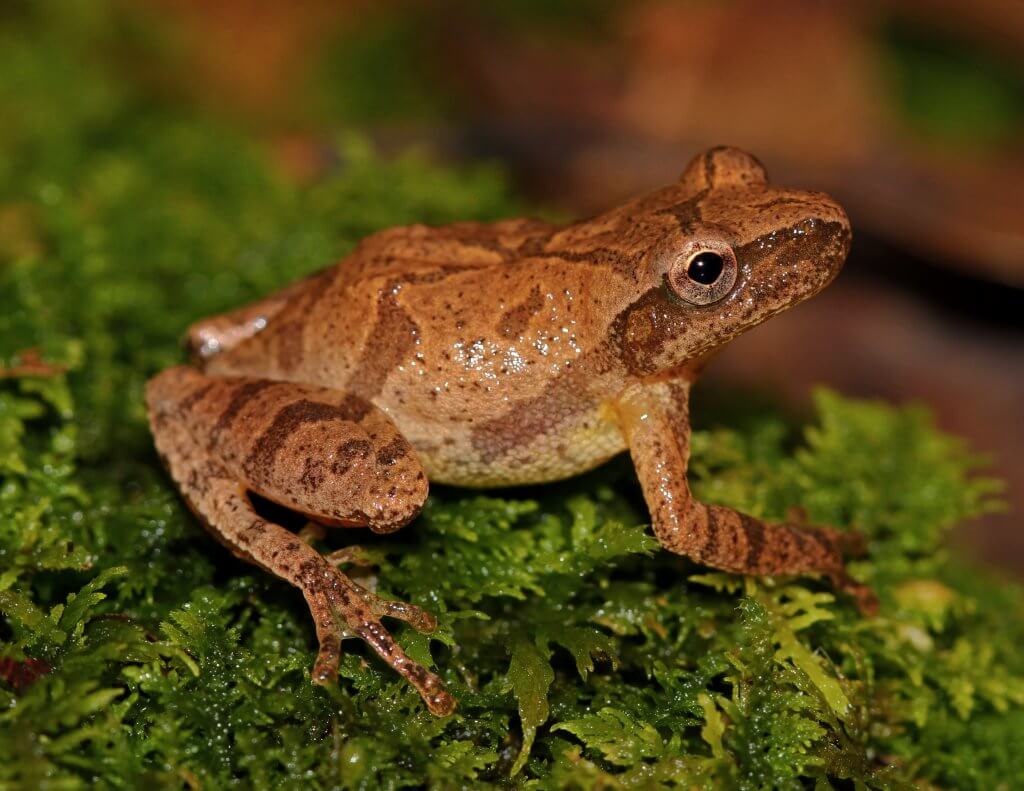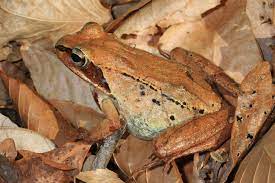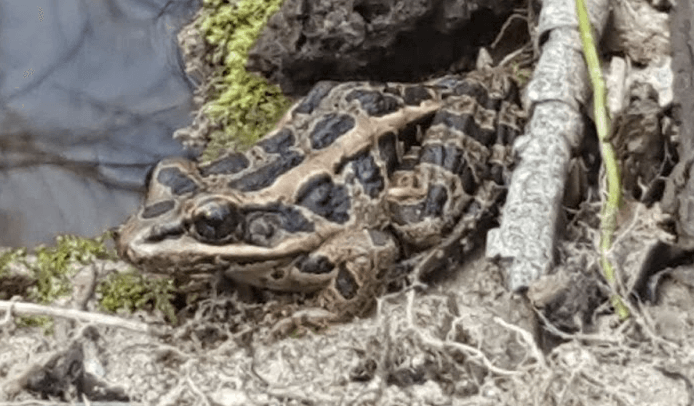The first warm days of March can sometimes bring on a sensory overload. Birds are chirping and flitting about. Insects seem to hatch out spontaneously, and the sounds that we associate with midsummer evenings are suddenly upon us. At Adkins Arboretum, we have many habitats that foster a variety of springtime critters. If you pass by (or are within half a mile of) a moist area, be it a ditch, wetland, or ephemeral pond, you probably hear loud clicks, chirps, and peeps. No, it’s not quite summer yet, and the crickets and cicadas don’t come out until later (Cicada Brood X coming near you in May 2021!).
When you’re near New Jersey chorus frogs and spring peepers, you’re likely to notice their sound first. The forest swamps resonate with their clicks and peeps. Other frogs, like wood frogs and pickerel frogs, are characterized by slower sounds like a coughing quack or a guttural snore.

Spring Peeper 
Wood Frog 
Pickerel Frog
Classified as tree frogs, chorus frogs and spring peepers are relatively small, at about 1 to 1.5 inches in size, but their sound more than makes up for their smaller stature. Both are pale gray to light brown and call day or night.
The New Jersey chorus frog is the earliest breeding frog. They are commonly found on the Eastern Shore, while the western shore more commonly is residence to the similar Upland chorus frog. The New Jersey chorus frog sounds like a finger running down the teeth of a comb. If you happen across a spring peeper, you might identify it by a dark “X” on its back, but, perhaps more likely, you can identify it by its high-pitched “peeps.”
If you hear a quack or a yelp, that is more likely a wood frog. Wood frogs are famous for their ability to freeze completely in winter and then immediately “thaw” and resume business. They have a dark eye mask and are mostly brown on the rest of their body. At Adkins, wood frogs are often seen individually along Blockston Branch, though they are known to make their own chorus during breeding season in the spring.
Pickerel frogs are also early to the spring party, announcing themselves with a low-pitched snore. Sometimes confused with the leopard frog, pickerel frogs are tan with two rows of dark brown rectangular spots running down their back. If you get a look at their legs, they have a distinctive yellow area on their inner thigh.
Maryland DNR has an excellent online guide if you’d like to learn more about frogs and toads. If you’re curious about where in Maryland you can find these critters and what they sound like, the Maryland Biodiversity Project is an incredible resource.
Adkins Arboretum is a 400-acre native garden and preserve that serves as a model for land management, engaging all ages in conservation and restoration of the Chesapeake region’s native landscapes through education, recreation, the arts, and community events.
Cover photo: Spring peeper. Photo: Wikimedia Commons.




